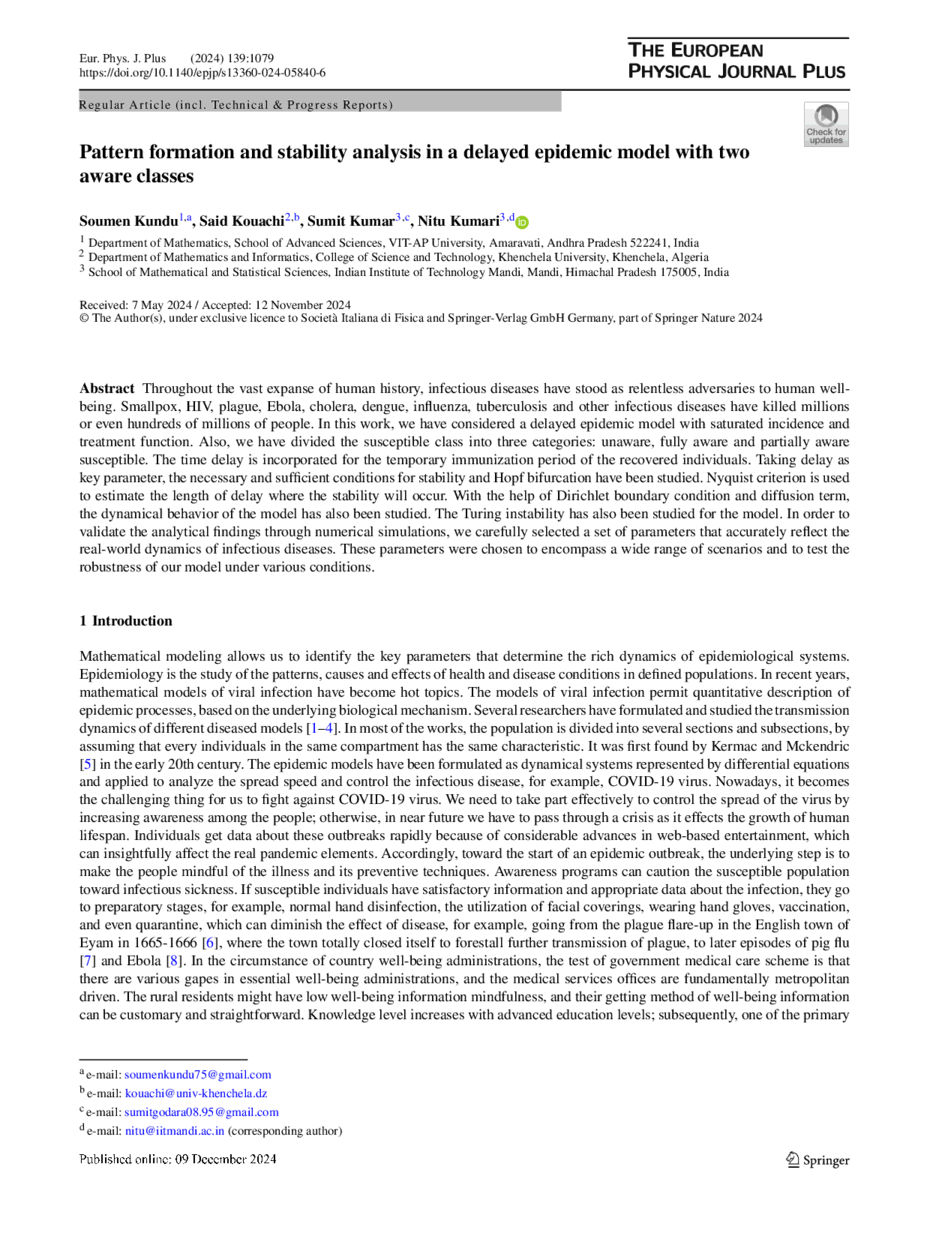https://doi.org/10.1140/epjp/s13360-024-05840-6
Regular Article (incl. Technical & Progress Reports)
Pattern formation and stability analysis in a delayed epidemic model with two aware classes
1
Department of Mathematics, School of Advanced Sciences, VIT-AP University, 522241, Amaravati, Andhra Pradesh, India
2
Department of Mathematics and Informatics, College of Science and Technology, Khenchela University, Khenchela, Algeria
3
School of Mathematical and Statistical Sciences, Indian Institute of Technology Mandi, 175005, Mandi, Himachal Pradesh, India
Received:
7
May
2024
Accepted:
12
November
2024
Published online:
9
December
2024
Throughout the vast expanse of human history, infectious diseases have stood as relentless adversaries to human well-being. Smallpox, HIV, plague, Ebola, cholera, dengue, influenza, tuberculosis and other infectious diseases have killed millions or even hundreds of millions of people. In this work, we have considered a delayed epidemic model with saturated incidence and treatment function. Also, we have divided the susceptible class into three categories: unaware, fully aware and partially aware susceptible. The time delay is incorporated for the temporary immunization period of the recovered individuals. Taking delay as key parameter, the necessary and sufficient conditions for stability and Hopf bifurcation have been studied. Nyquist criterion is used to estimate the length of delay where the stability will occur. With the help of Dirichlet boundary condition and diffusion term, the dynamical behavior of the model has also been studied. The Turing instability has also been studied for the model. In order to validate the analytical findings through numerical simulations, we carefully selected a set of parameters that accurately reflect the real-world dynamics of infectious diseases. These parameters were chosen to encompass a wide range of scenarios and to test the robustness of our model under various conditions.
Copyright comment Springer Nature or its licensor (e.g. a society or other partner) holds exclusive rights to this article under a publishing agreement with the author(s) or other rightsholder(s); author self-archiving of the accepted manuscript version of this article is solely governed by the terms of such publishing agreement and applicable law.
© The Author(s), under exclusive licence to Società Italiana di Fisica and Springer-Verlag GmbH Germany, part of Springer Nature 2024
Springer Nature or its licensor (e.g. a society or other partner) holds exclusive rights to this article under a publishing agreement with the author(s) or other rightsholder(s); author self-archiving of the accepted manuscript version of this article is solely governed by the terms of such publishing agreement and applicable law.





